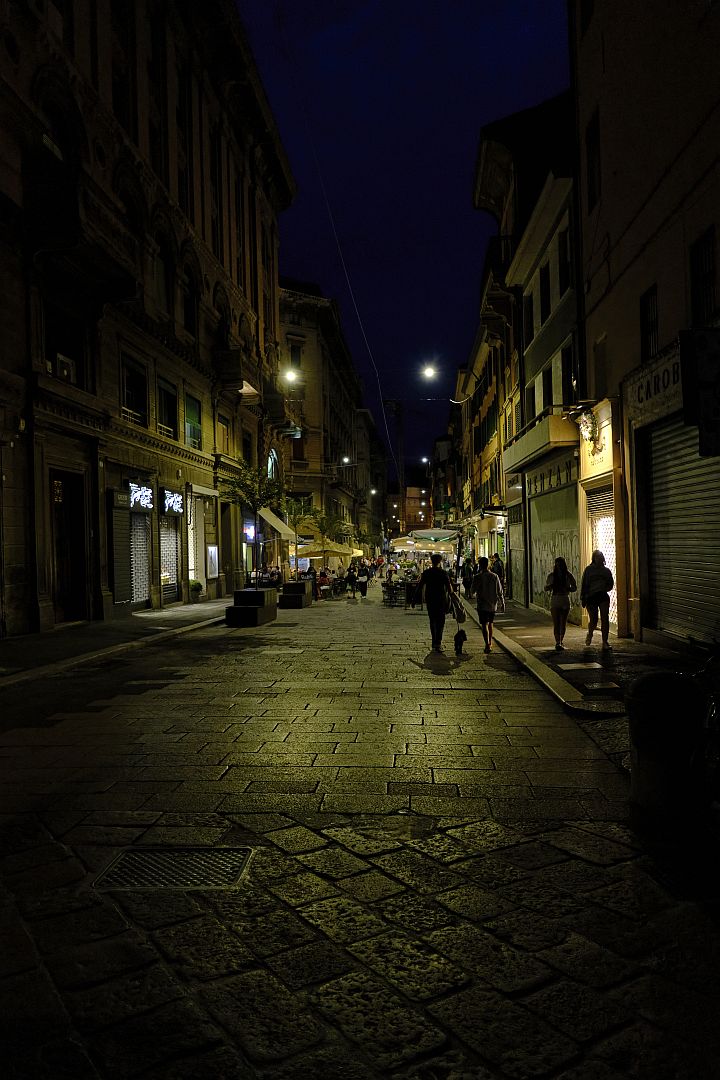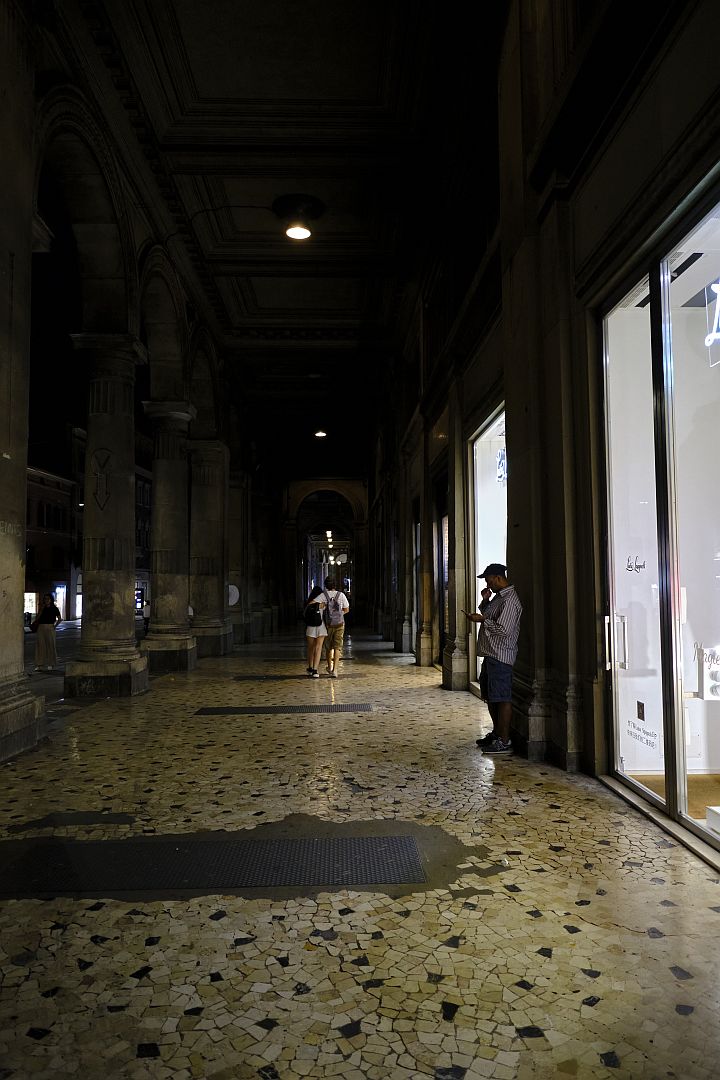Earlier this year we visited Bologna and I published a short post of street photography – people and shops. Recently we went there again and I was able to get in some evening and night photography. Again, these were taken on my Fujifilm X-Pro3 camera which is assuming a similar place in my affections to my old Contax G1 35mm film camera.
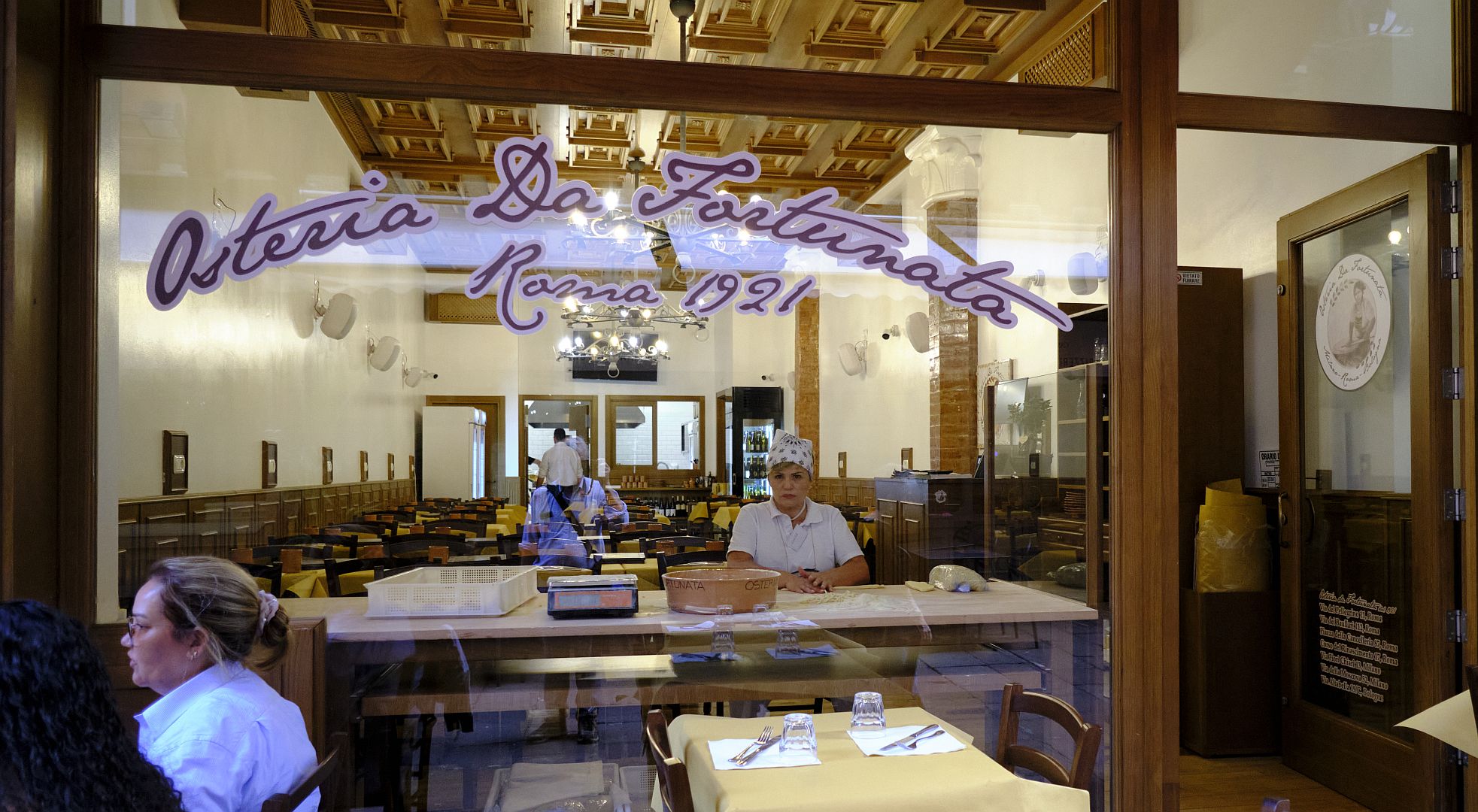
In terms of image quality the X-Pro3 cannot match my medium-format Fujifilm GFX 50R camera with its much larger sensor, but it has its advantages. It is small and unobtrusive compared to the larger camera, and much lighter – where the GFX 50R has brass and steel, the X-Pro3 has magnesium and titanium. And the lenses for larger cameras need more glass, which adds weight. As a result the X-Pro3 with a 16mm lens weighs a bit over 700 grams, while the GFX 50R with its 32-64mm lens weighs in at over 1.7 kilograms.
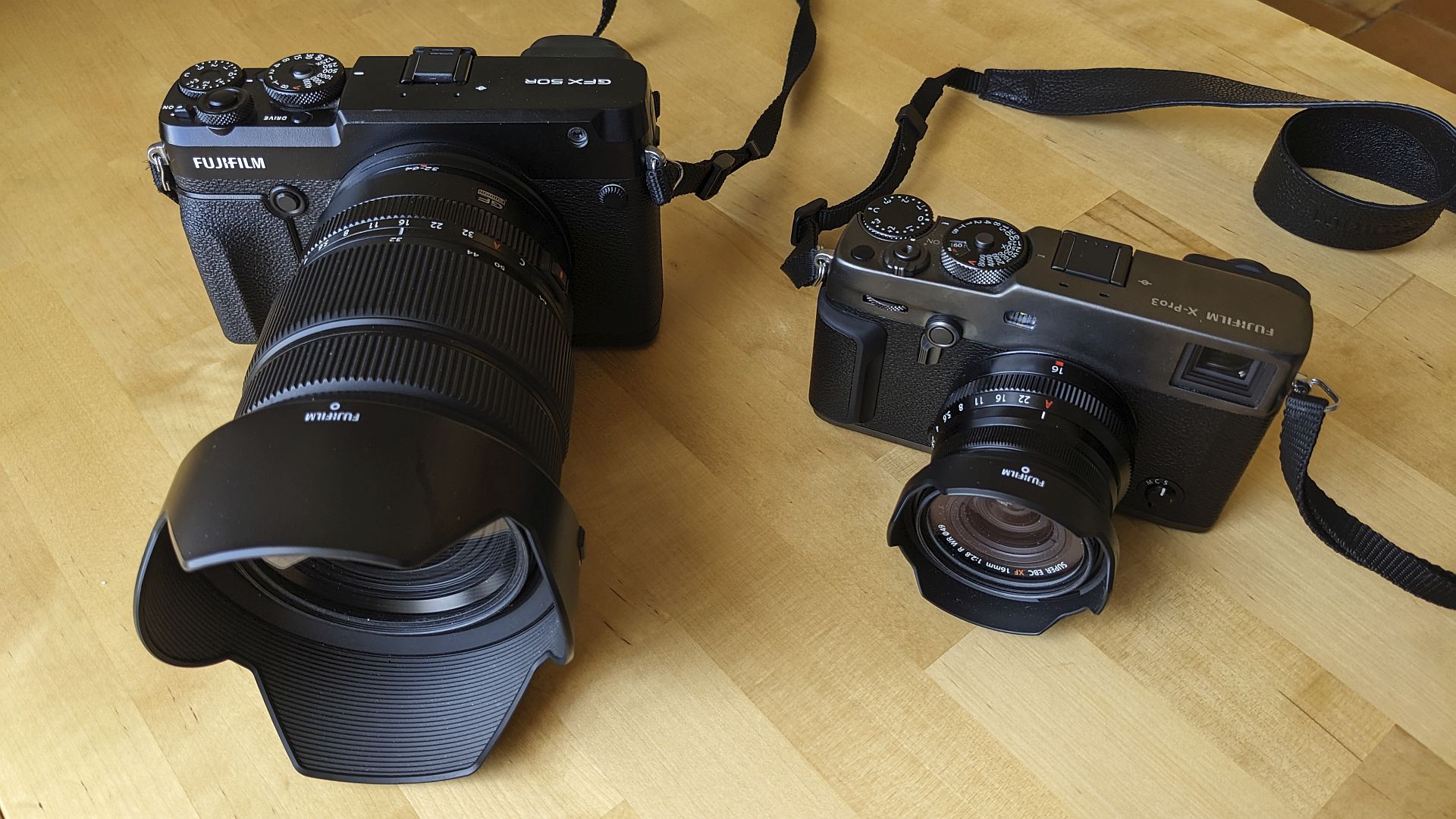
Of course night photography has challenges – as the light in the sky fades, shadows become darker and you need to boost the ISO, which makes the resulting images noisier, which is to say more grainy. Modern software can help a lot with noise reduction – I use something called Topaz DeNoise AI.
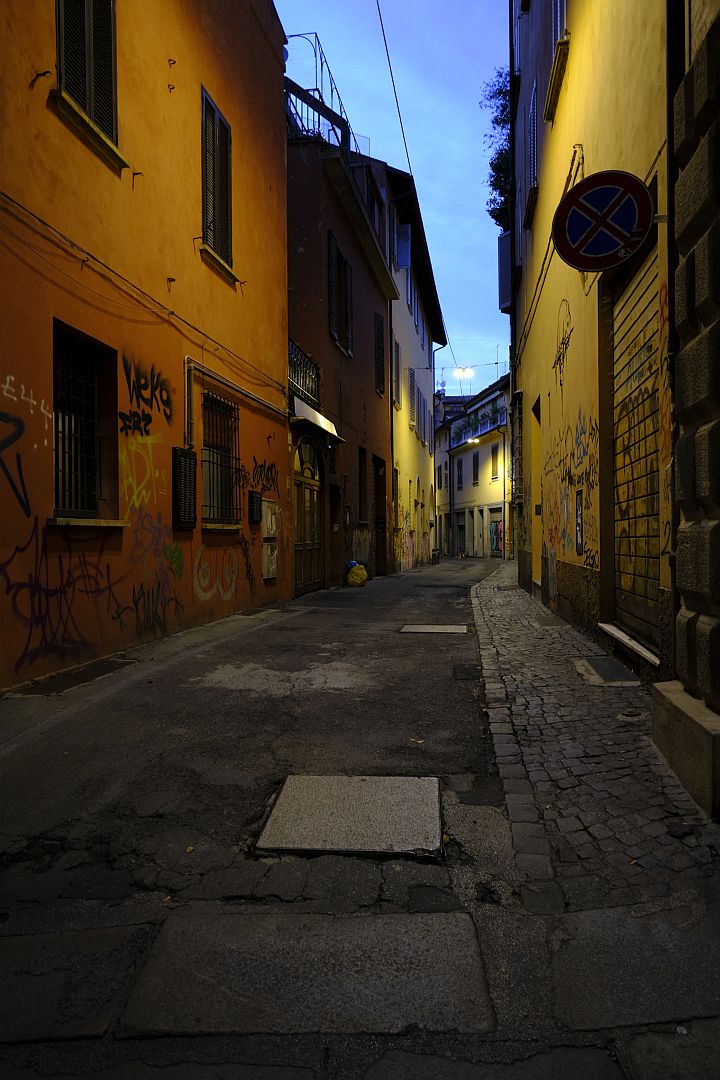
One of the best times is when the light in the sky is at about the same level as that illuminating the objects you are photographing. This period is quite short, although it lasts a bit longer in summer. Digital post-processing does allow you to extend that period by adjusting highlights and shadows, but if overdone it will look artificial.
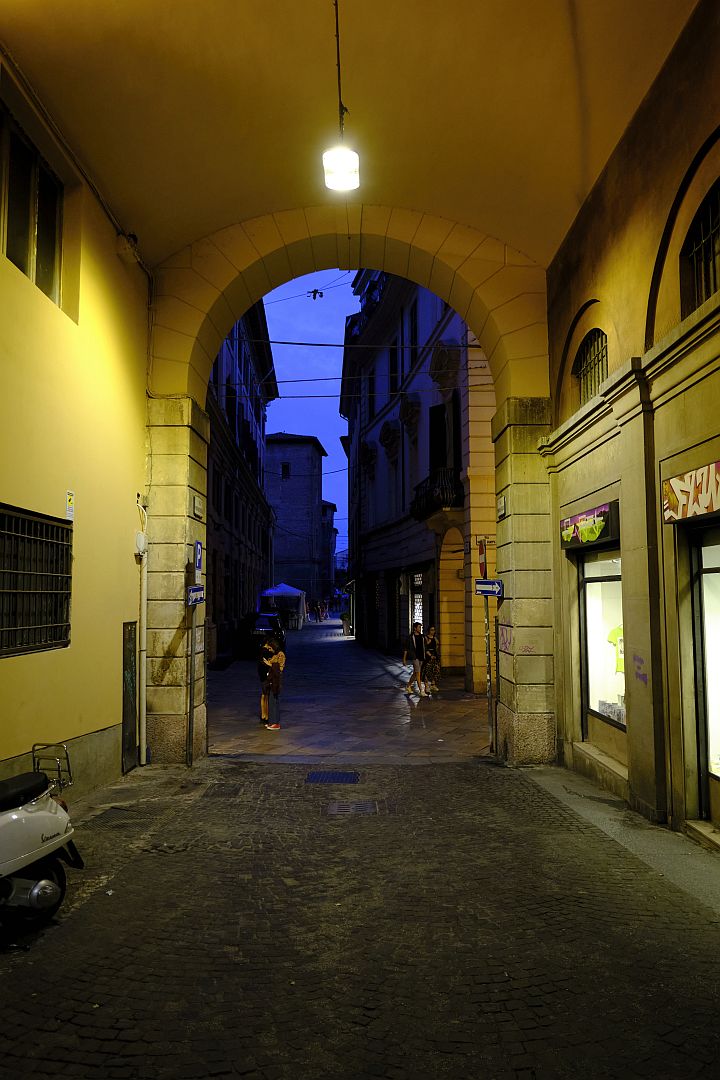
I was using a wide-angle lens, which has some disadvantages – objects and people appear smaller. But it has some advantages for street photography. The wide angle allows you to point the camera past people rather than at them, while still getting them in the composition.
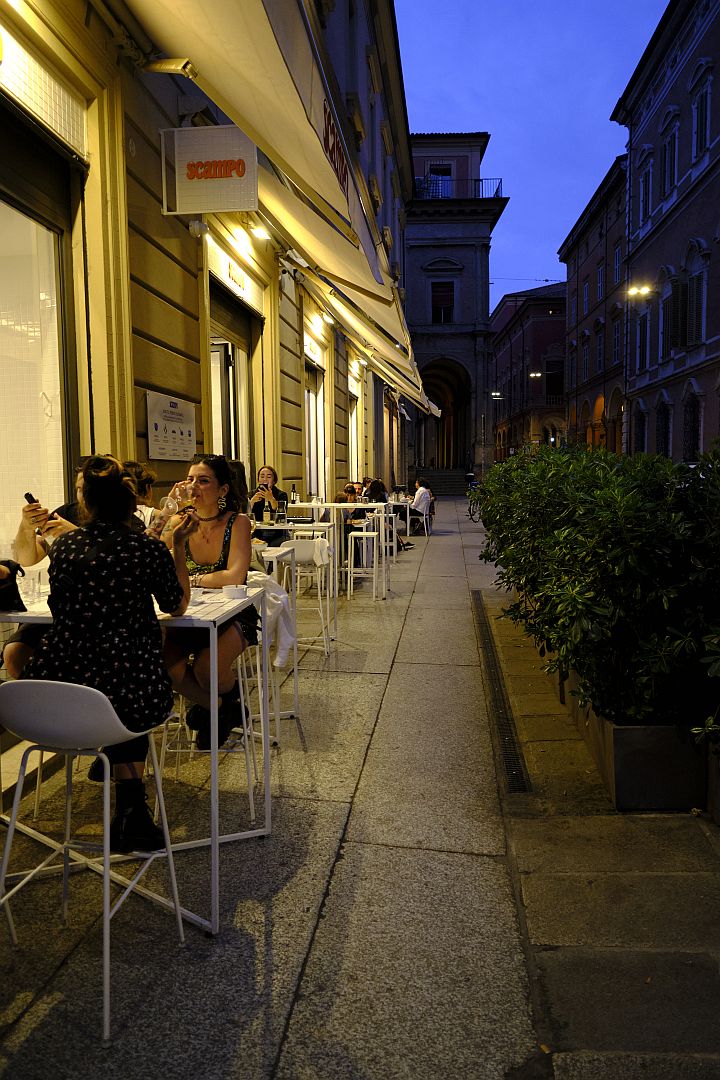
Wide-angle lenses can also give you a lot of foreground in the shot, which is not a good thing if the foreground is boring. On the other hand if you can make the foreground interesting, for example by looking for people casting long shadows, it can add to the mood, or even become one of the subjects of the composition.
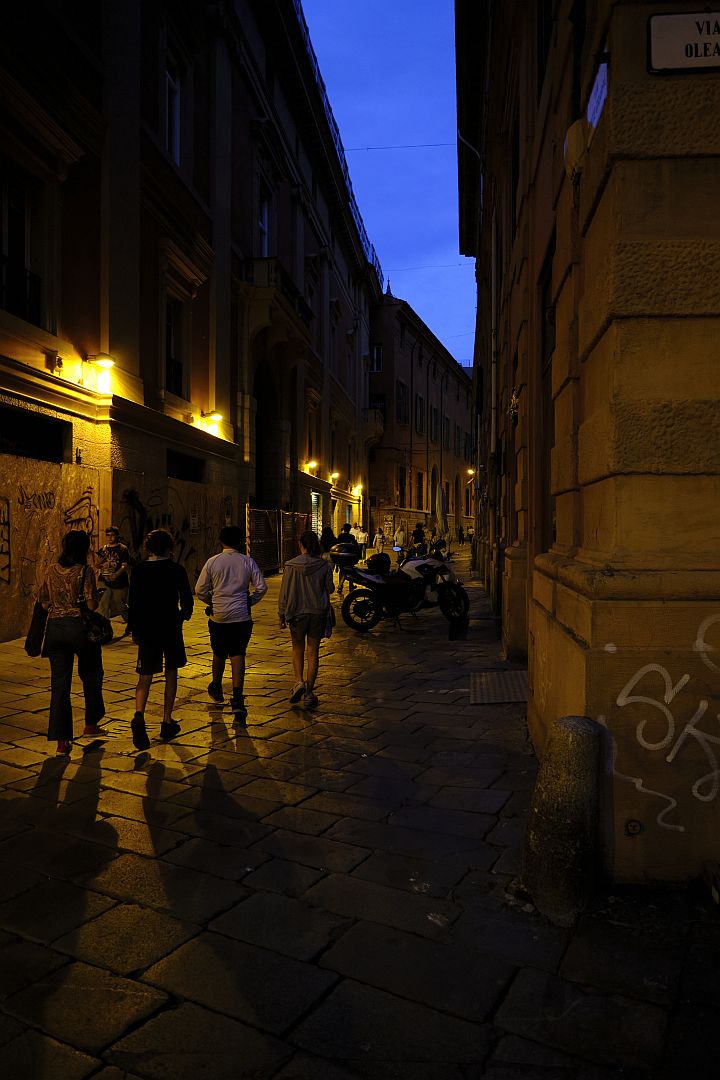
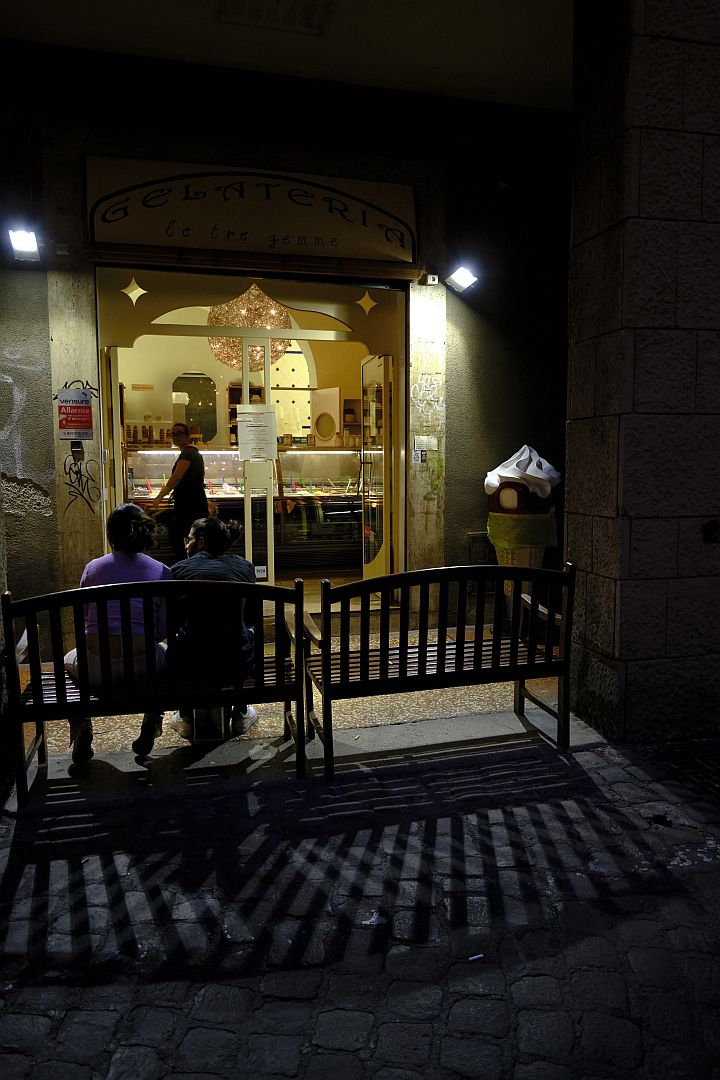
By the time we got to the main piazza, the sky was getting a lot darker, but was still bright enough to create silhouettes. Silhouettes in night photography can be overrated, but when they are instantly recognisable like the Statue of Neptune, they can be worth it.
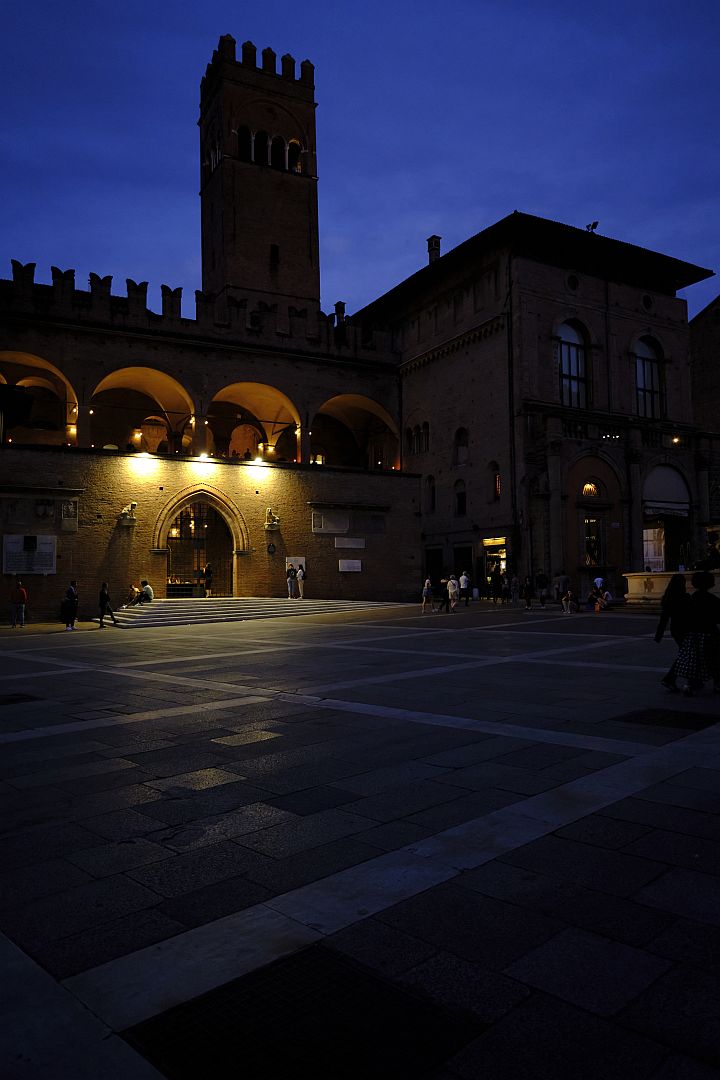
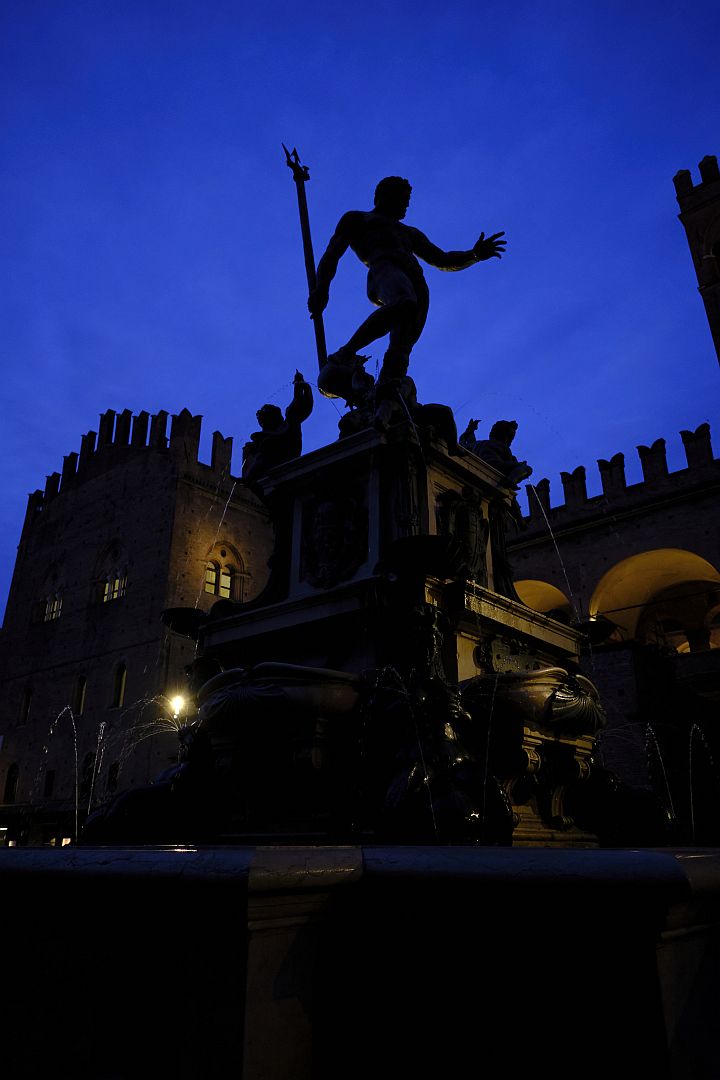
Eventually it got to the point where the only source of light was street lights and shop windows.

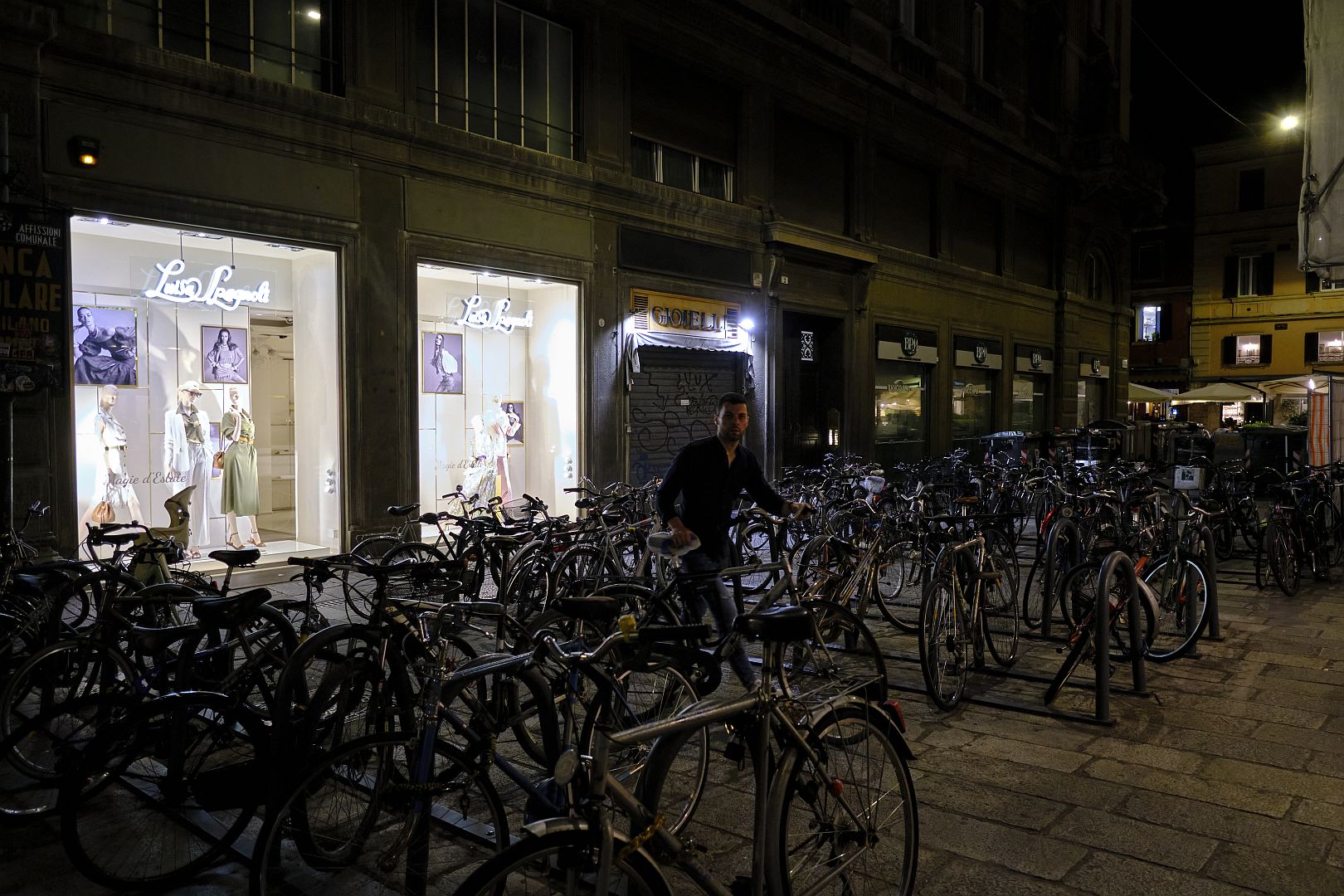
Not long ago, most of the shop interiors would have been lit by fluorescent tubes. The light produced by these would come out on film and digital sensors as a ghastly blue-green. And incandescent light bulbs came out as very yellow, so when both sources were present, it was almost impossible to balance them without some advanced post-processing techniques. These days people mostly light their shops with LEDs, which produce light that looks a lot more natural to a camera. A win for night photography as well as for the environment.
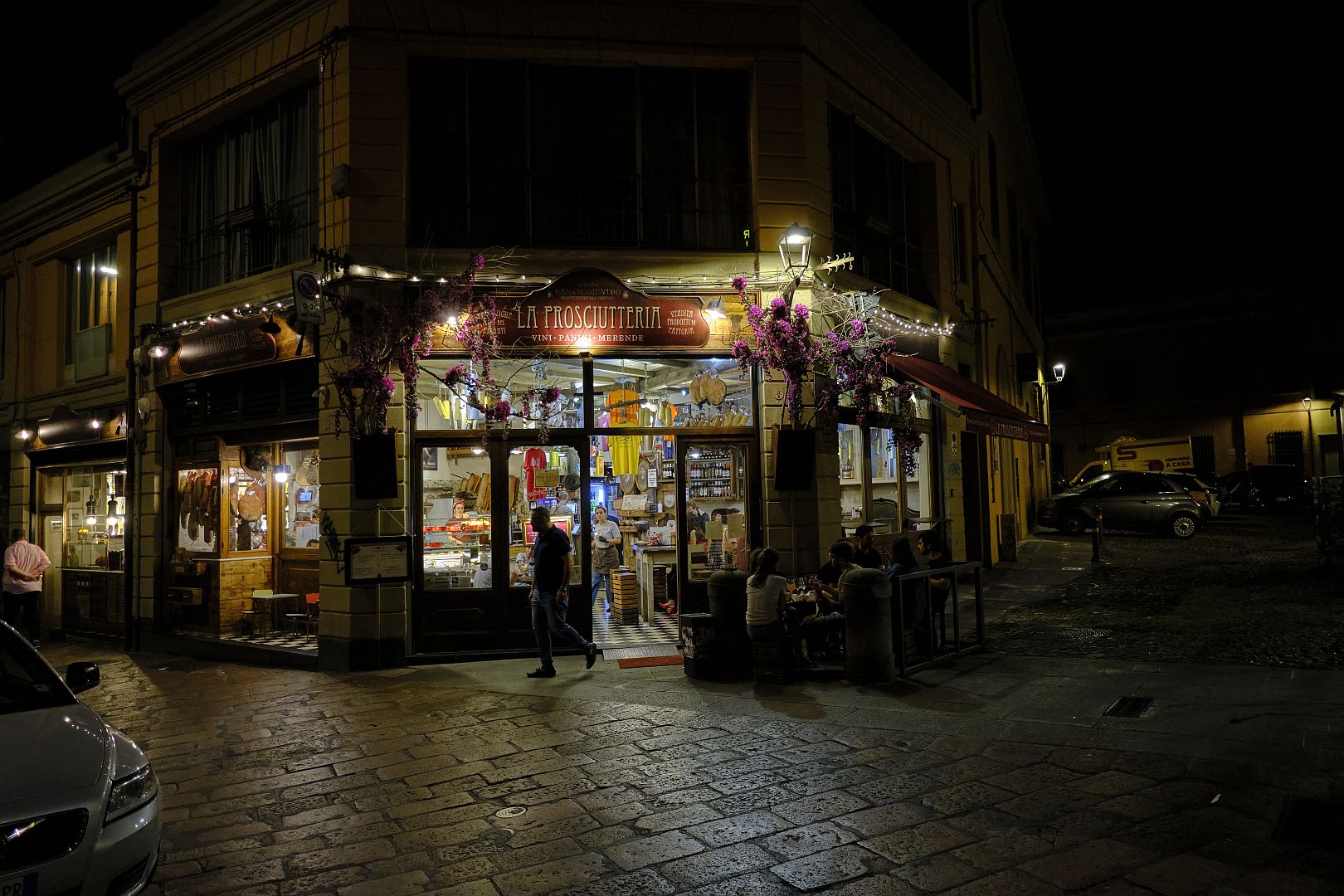
Lighting coming from odd directions can help the street photographer to pick out a subject and try and tell a story. As someone who mostly did landscape photography for many years I will admit that I am still coming to grips with this, but it is fun when it works out.
